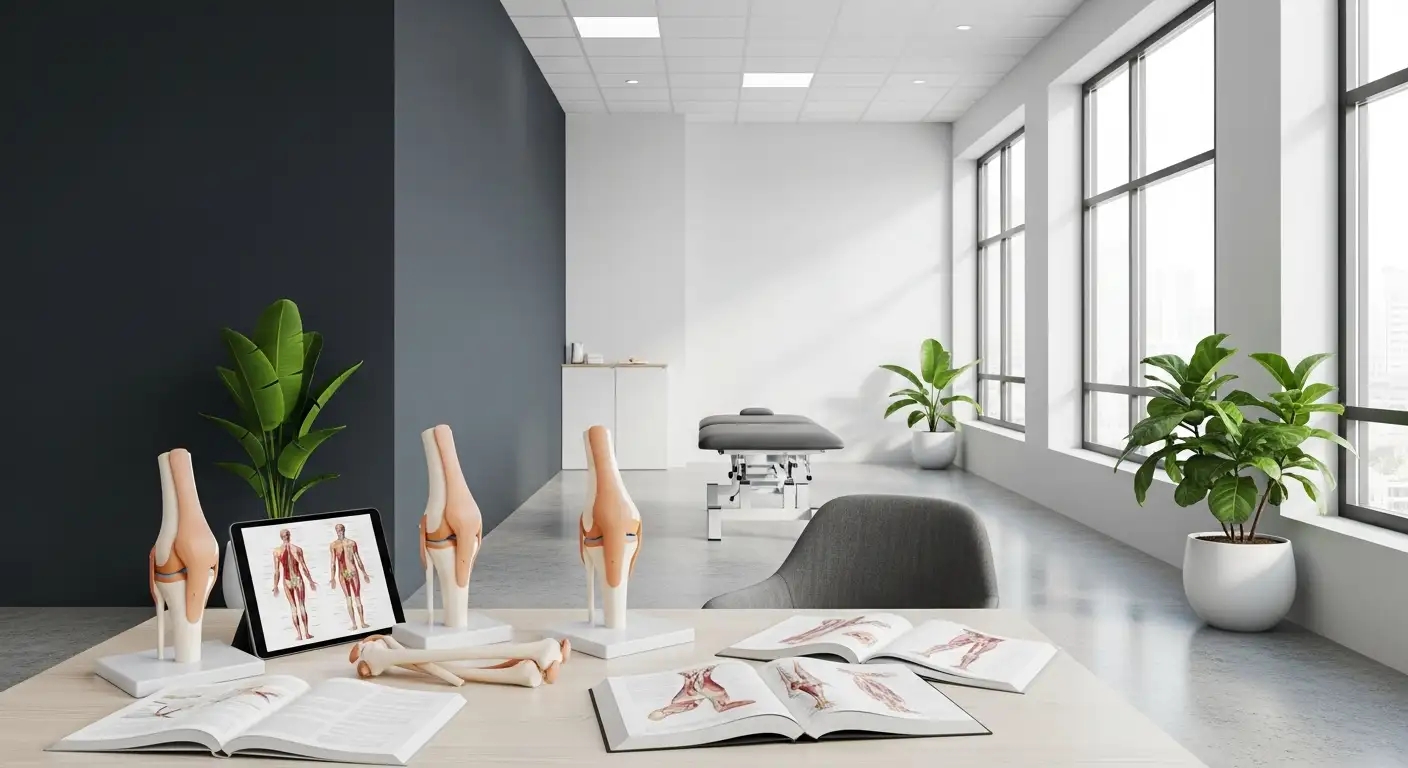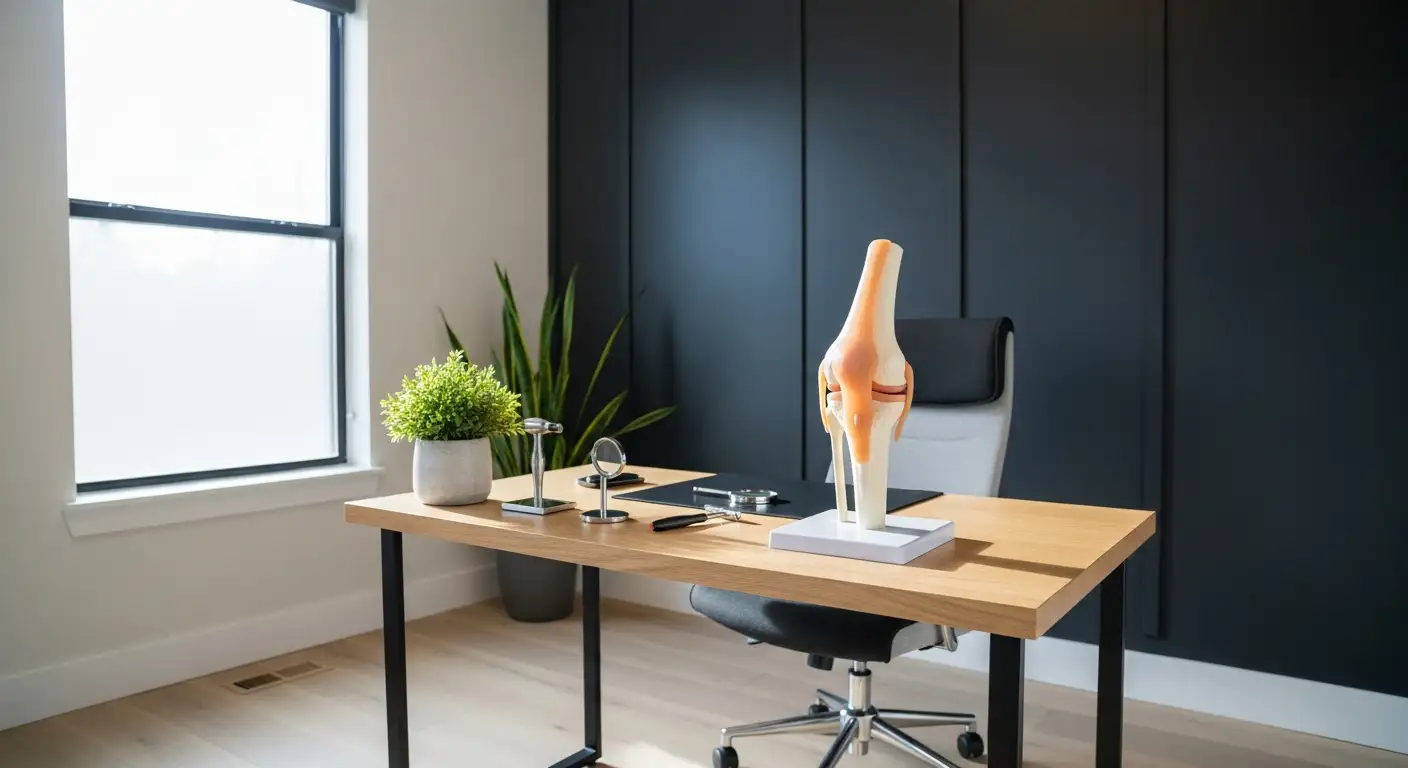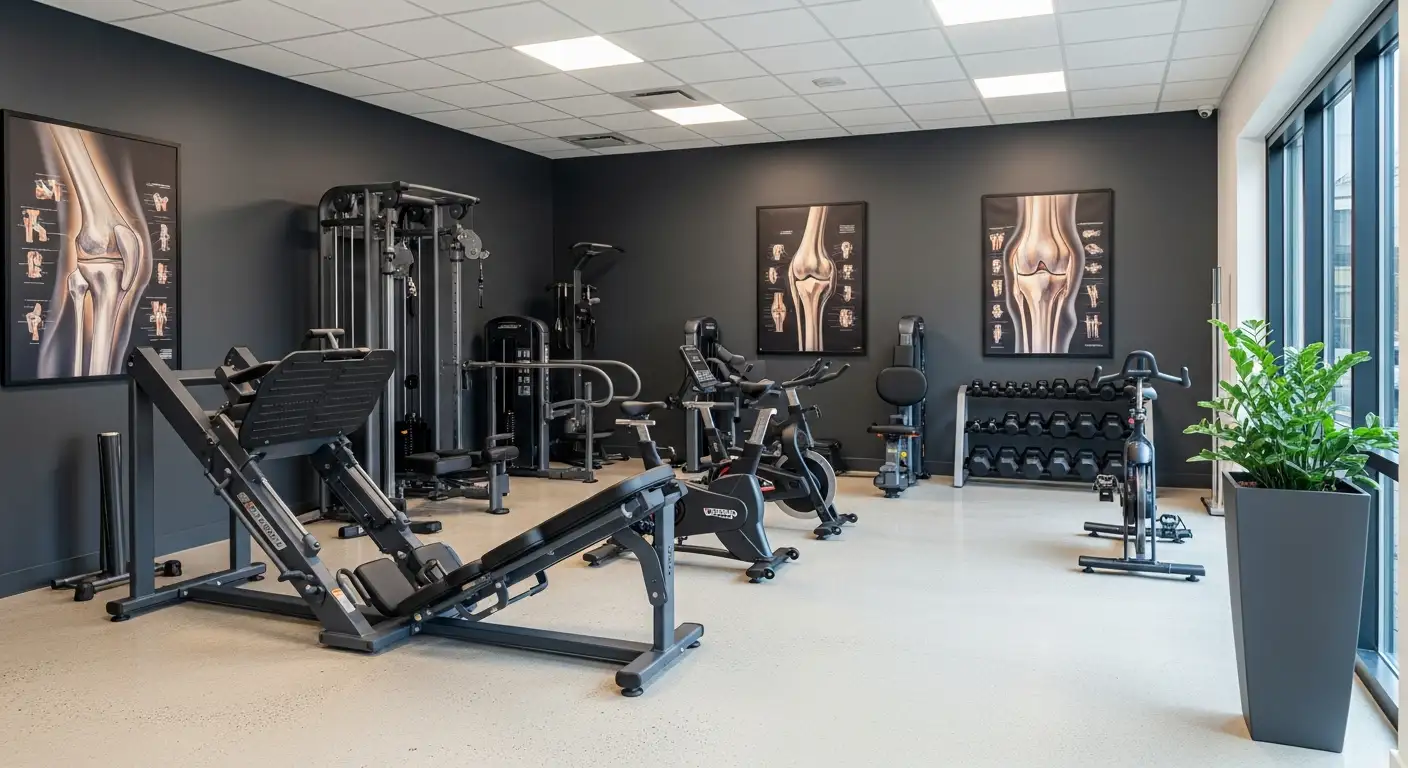Understanding Knee Pain
Knee pain is a prevalent health issue, with about 25% of American adults reporting discomfort while climbing stairs, according to a study [1]. It can be caused by various factors, including injury, overuse, weak quadriceps, or certain health conditions like arthritis.
Common Causes of Knee Pain
Knee pain when climbing stairs can be attributed to a range of conditions. Patellofemoral pain syndrome (PFPS), common among active individuals, especially women and young people, is one such condition that can lead to discomfort during stair climbing. Other conditions that may cause knee pain include arthritis and iliotibial band syndrome. These conditions can lead to pain, stiffness, and swelling in the knee joint.

It's also crucial to note that knee pain can result from weak quadriceps, the muscle group at the front of the thigh. These muscles play a significant role in knee stabilization and movement, and weakness here can lead to discomfort during activities that exert pressure on the knee, like climbing stairs. Additionally, knee injuries or overuse from high-impact activities can also cause pain when ascending or descending stairs.
Why Stairs Can Exacerbate Knee Pain
Stair climbing can exacerbate knee pain due to the increased load placed on the knee joint. This activity requires the knee to support a significant amount of the body's weight, placing stress on the joint and the surrounding structures. As a result, individuals with pre-existing knee conditions or injuries may experience increased discomfort during this activity.
During stair climbing, the knee joint undergoes a bending and straightening motion, which can be particularly challenging for those with knee pain. This motion can aggravate pain and inflammation, making climbing stairs a difficult and uncomfortable task for many individuals.
Understanding the common causes of knee pain and why stairs can exacerbate this discomfort is the first step in finding effective solutions. Addressing these issues may involve a combination of lifestyle changes, physical therapy, medication, and in some cases, surgery. The next sections will delve further into the different conditions that can cause knee pain, along with possible treatment strategies.
Knee Pain and Different Conditions
Knee pain when climbing stairs can be a symptom of various conditions. This section will focus on two common conditions linked to knee pain when climbing stairs: Patellofemoral Pain Syndrome and Osteoarthritis.
Patellofemoral Pain Syndrome
Patellofemoral Pain Syndrome (PFPS), also known as runner's knee, is a common condition among active individuals, especially women and young people [1]. It's characterized by pain in the front of the knee and around or behind the kneecap. This condition can be aggravated by activities that load the joint, such as climbing stairs.
While the exact cause of PFPS is not entirely understood, it's believed to be associated with imbalances or dysfunctions in the muscles around the knee. This can lead to abnormal movement of the kneecap, causing increased pressure and subsequent pain. Treatment for PFPS often involves physiotherapy exercises aimed at strengthening the muscles around the knee and improving balance.
Osteoarthritis and Knee Pain
Osteoarthritis is a degenerative joint disease that commonly affects older individuals but can occur at any age. It involves the wearing away of the cartilage that cushions the ends of the bones, leading to bone-on-bone contact and subsequent pain and inflammation. Symptoms can include pain, tenderness, swelling, and decreased range of motion. The pain can worsen during weight-bearing activities such as climbing stairs, which place extra stress on the damaged joint.
The severity of osteoarthritis can vary significantly from person to person. For some, it may have a minimal impact on their daily activities, while for others, it can be severely disabling. Treatment often involves lifestyle modifications, such as weight management and low-impact exercises, along with pain-relief medications. In severe cases where these methods are not effective, joint replacement surgery may be considered.
Understanding the underlying conditions behind knee pain when climbing stairs can help individuals seek the right treatment and potentially reduce pain. It's important to seek medical advice if knee pain persists or if it's affecting your ability to perform daily activities.
Lifestyle Factors and Knee Pain
Understanding the impact of lifestyle factors on knee pain is crucial in managing the condition effectively. Two major elements that play a significant role in knee pain, especially when climbing stairs, are body weight and physical activity.
The Role of Weight in Knee Pain
Excess weight can exacerbate knee pain, particularly when climbing stairs, due to the increased force placed on the knees. This is because for every pound of weight gain, four pounds of pressure is added to the knees. Therefore, losing even a small amount of weight can lead to substantial relief of knee pain symptoms, especially when going up and down stairs.
For instance, losing just 10 pounds can eliminate 40 pounds of pressure on the knee joints when climbing stairs, leading to decreased pain and improved mobility.
Impact of Exercise and Stair Climbing
Aside from weight management, regular physical activity is also essential for managing knee pain. While knee pain can make exercise seem daunting, particularly exercises involving weight bearing like stair climbing, it's important to note that the right kind and amount of exercise can help strengthen the muscles around the knee, reduce pain, and improve joint health.
Physical activity can also help maintain a healthy weight, reducing the load on the knees and leading to improved function and quality of life for individuals experiencing knee pain when climbing stairs. Regular exercise can also decrease the risk of developing conditions such as osteoarthritis, which can contribute to knee pain during activities like stair climbing.
In conclusion, understanding the role of weight and exercise in knee pain can help individuals develop effective strategies to manage their symptoms and improve their quality of life. Weight loss, in particular, can have a significant impact on knee pain, leading to less pain, stiffness, and physical limitations, especially when engaging in activities that involve climbing stairs or inclines.
Strategies for Knee Pain Relief
When it comes to knee pain when climbing stairs, implementing effective relief strategies can significantly improve your ability to navigate stairs without discomfort. These strategies include strengthening and flexibility exercises, as well as weight management.
Strengthening and Flexibility Exercises
Strengthening the muscles around the knee, such as the quadriceps and hamstrings, can help alleviate knee pain by providing better support and stability to the joint. This, in turn, can improve knee function and reduce discomfort when climbing stairs [7].
Certain exercises can target these key muscles. Step-ups, for example, using a step or chair, can help strengthen the quadriceps and gluteal muscles, hence reducing knee pain during activities like climbing stairs.
In addition to strengthening exercises, proper warm-up exercises before stair climbing can help reduce knee pain by promoting blood flow to the muscles and joints around the knee [7].
Weight Management and Knee Pain
Excess weight can exacerbate knee pain when climbing stairs. This is because the additional load on the knee joints from excess weight can worsen conditions like osteoarthritis. In fact, losing just one pound of body weight can reduce the load on the knees by four pounds when climbing stairs.
Furthermore, being overweight increases the risk of developing osteoarthritis, as excess weight can contribute to the breakdown of cartilage and potentially lead to knee pain when climbing stairs [9].
Studies have shown that losing weight can help reduce knee pain, improve function, and enhance quality of life for individuals suffering from knee pain when climbing stairs. Even a moderate weight loss of 5-10% of one's body weight can lead to significant improvements in knee pain and function.
Implementing a combination of weight loss, exercise, physical therapy, and sometimes surgery, can be effective in managing knee pain when climbing stairs, particularly in cases where osteoarthritis is the primary cause of discomfort [9].
Proper warm-up exercises, maintaining a healthy weight, using correct footwear, and avoiding high-impact activities can all contribute to reducing knee pain when climbing stairs [2].
Medical Treatments for Knee Pain
When self-care measures such as rest, ice, compression, and elevation aren't enough to manage knee pain when climbing stairs, medical treatments may be necessary. This can include physical therapy, medications, injections, and in some cases, surgery. It's essential to seek medical advice for persistent knee pain when climbing stairs, as it may indicate an underlying condition requiring professional evaluation and treatment to prevent further damage.
Role of Physical Therapy and Medication
Physical therapy can be a powerful tool in managing knee pain when climbing stairs. A physical therapist can design a personalized program to strengthen the muscles around the knee, improve balance, and increase flexibility. This can help alleviate pain and make it easier to climb stairs [2].
Medications, including over-the-counter and prescription anti-inflammatory drugs, can also help manage knee pain. Injections, such as corticosteroids or hyaluronic acid, may be used for more severe or persistent pain.
When Surgery Might Be Necessary
In severe cases, when non-surgical treatments aren't effective, surgery may be recommended to treat knee pain when climbing stairs. The type of surgery depends on the underlying cause and severity of the condition. It could range from arthroscopic surgery to repair or remove damaged cartilage to knee replacement surgery for advanced arthritis.
It's critical to discuss all treatment options with a healthcare provider to understand the potential risks and benefits. They can help determine the most appropriate treatment plan for each individual patient.
Remember, early intervention can prevent further damage and improve quality of life. If you experience persistent knee pain when climbing stairs, don't hesitate to seek medical attention.
References
[2]: https://www.medicalnewstoday.com/articles/311263
[3]: https://theprehabguys.com/how-to-decrease-knee-pain-using-the-stairs/
[4]: https://www.mayoclinic.org/symptoms/knee-pain/basics/when-to-see-doctor/sym-20050688
[5]: https://www.hingehealth.com/resources/articles/pain-in-knee-when-climbing-stairs/
[6]: https://www.health.harvard.edu/pain/why-weight-matters-when-it-comes-to-joint-pain
[7]: https://www.verywellhealth.com/knee-pain-going-up-stairs-5093107
[8]: https://solutionsphysicaltherapy.com/2-easy-exercises-to-stop-knee-pain/
[9]: https://www.healthline.com/health/osteoarthritis/knee-pain/link-between-weight-loss-and-knee-pain
[10]: https://www.healthline.com/health/pain-relief/knee-pain-stairs





